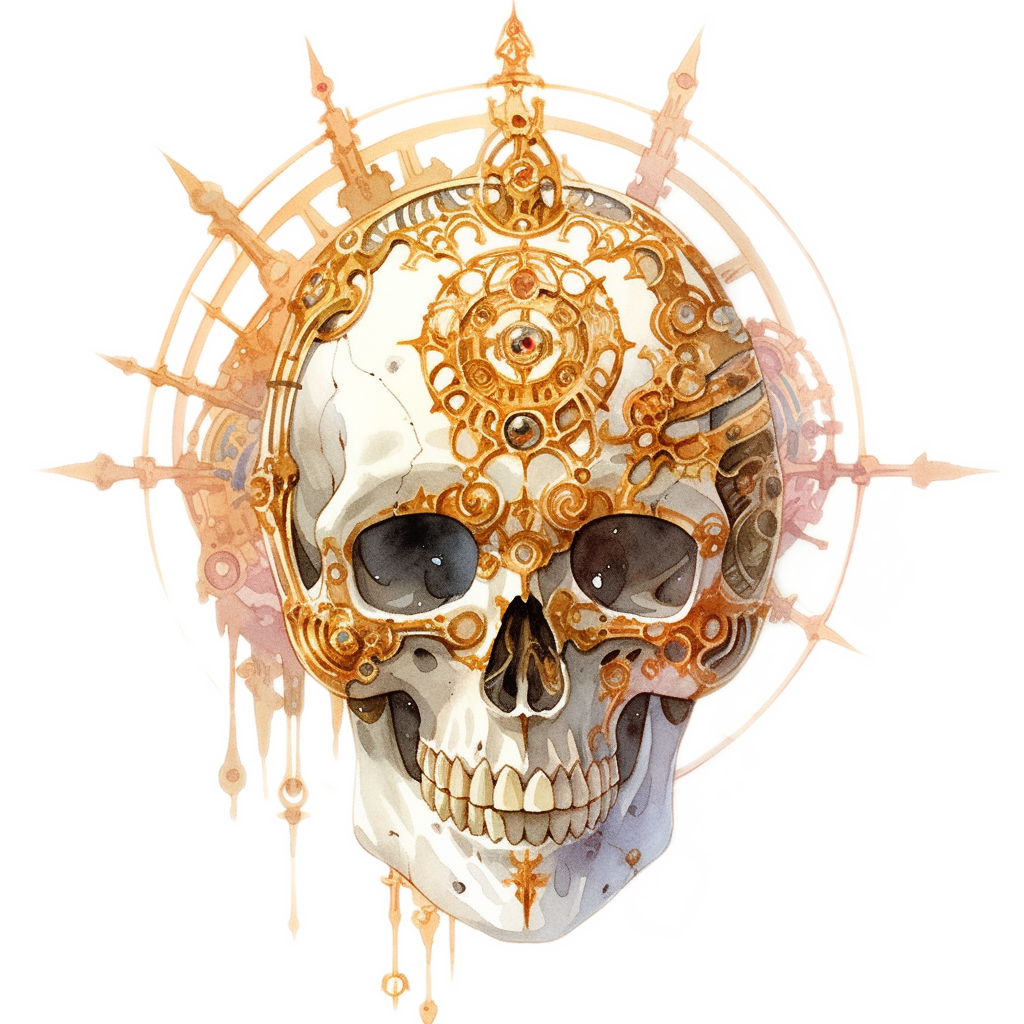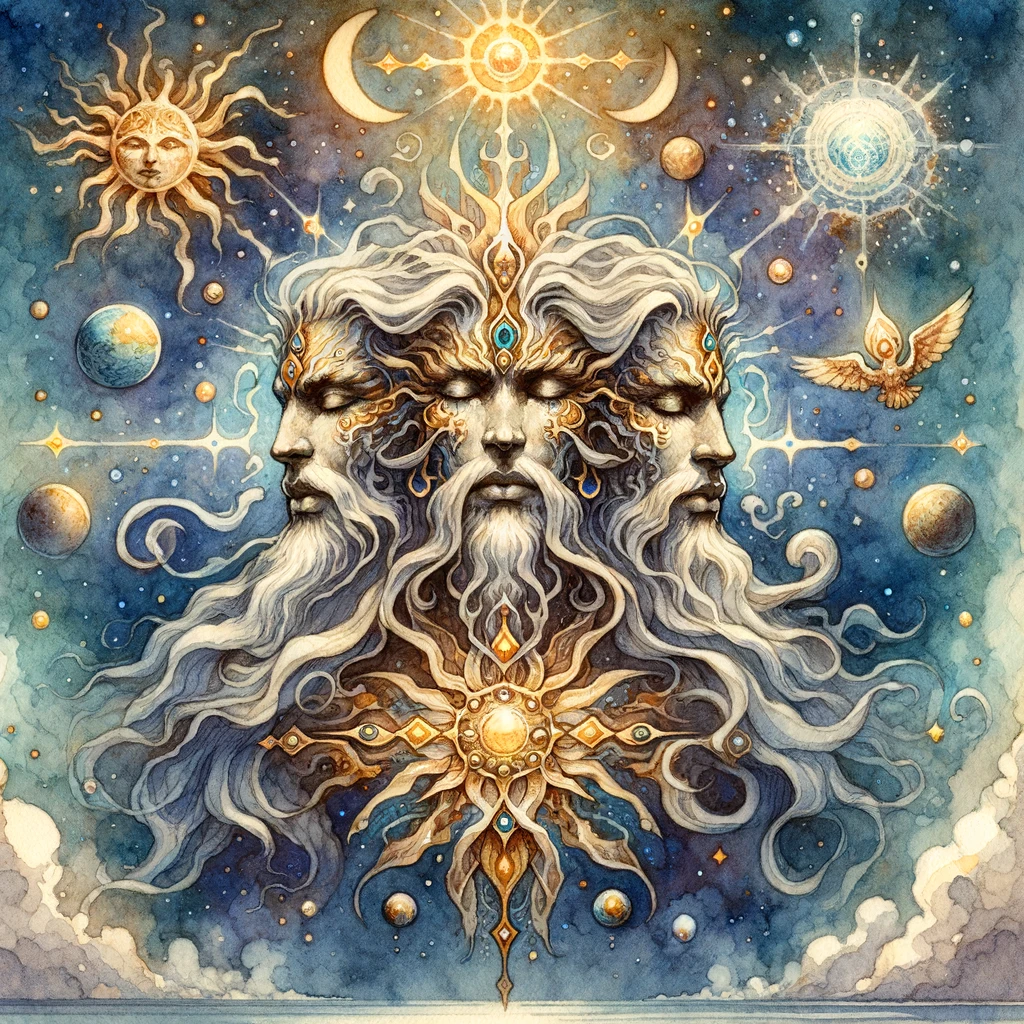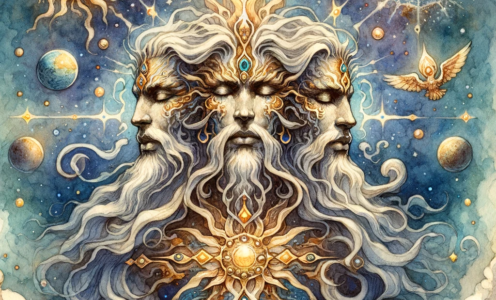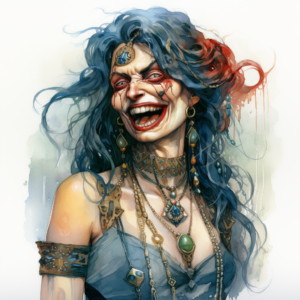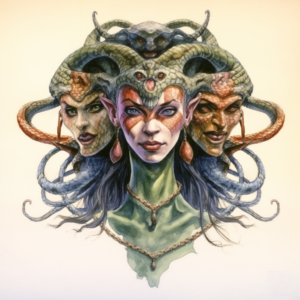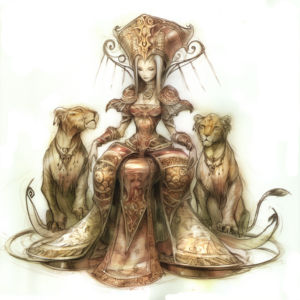The Athar Guide to Trinities
by Burbank and Corsica Ralopolis
Triple powers, tripartate gods, or trinities—these are the divine entities who like the Rule of Threes so much they decided to embody it. In the pantheons of divine beings, the triple gods are like a celestial committee that couldn’t decide on a chairperson, so they all took the job. These trinities often represent a sort of divine three-course meal, each aspect serving up a different flavor of omnipotence. Or perhaps an inflated ego split three ways, into three distinct personalities.
Take the Morrigan from Celtic mythology, a being so self-important that her pronoun is ‘the’; a trio of war goddesses who are actually also one (don’t think about it too hard) and would make even the boldest berk think twice before crossing them. They’re a package deal of battle, strife, and sovereignty, like a divine storm brewing on the horizon.
Or there’s the Trimurti of the Vedic pantheon: Brahma the Creator, Vishnu the Preserver, and Shiva the Destroyer. Together, they managing the cosmic cycle of creation, preservation, and destruction.
Then there’s the Fates of Greek mythology: Clotho, Lachesis, and Atropos. These three are like the weavers of destiny, deciding the beginning, middle, and end of every mortal’s tale. It’s as if they’re sitting up there with their cosmic loom, knitting the future one thread at a time. These cutters are more distinctly three different beings, but they’re hardly ever mentioned separately.
Similar, in Norse mythology, you’ve got the Norns: Urd (the past), Verdandi (the present), and Skuld (the future). These ladies oversee the great tree Yggdrasil, dishing out fate like it’s going out of style. They’re like the timekeepers of the Norse world, ensuring everything runs like clockwork, or should I say, like tree rings.
Look hard enough and you’ll find mention of triune gods or aspects, like the three faces of the moon power Selûne—waxing, full, and waning. It’s as if she couldn’t decide which phase of the moon she liked best, so she claimed all three. Or the three aspects of the power of wealth Waukeen—representing merchant, cross-trader and the very concept of commerce itself.
Breaking all the rules, the trinity power Shekinester has four different aspects, according to some chant. Go figure.
These trinities often embody the full spectrum of their pantheon’s themes, from life to death, creation to destruction, past to future. But let’s be real, it’s as if they couldn’t make up their minds on what kind of god to be, so they went with ‘all of the above.’ We can’t help but chuckle at their need to cover all the bases. They’re a reminder that even in the world of gods, sometimes three heads are better than one, especially when you can’t decide which head should be in charge.
See Also: The Athar Guide to the Powers
